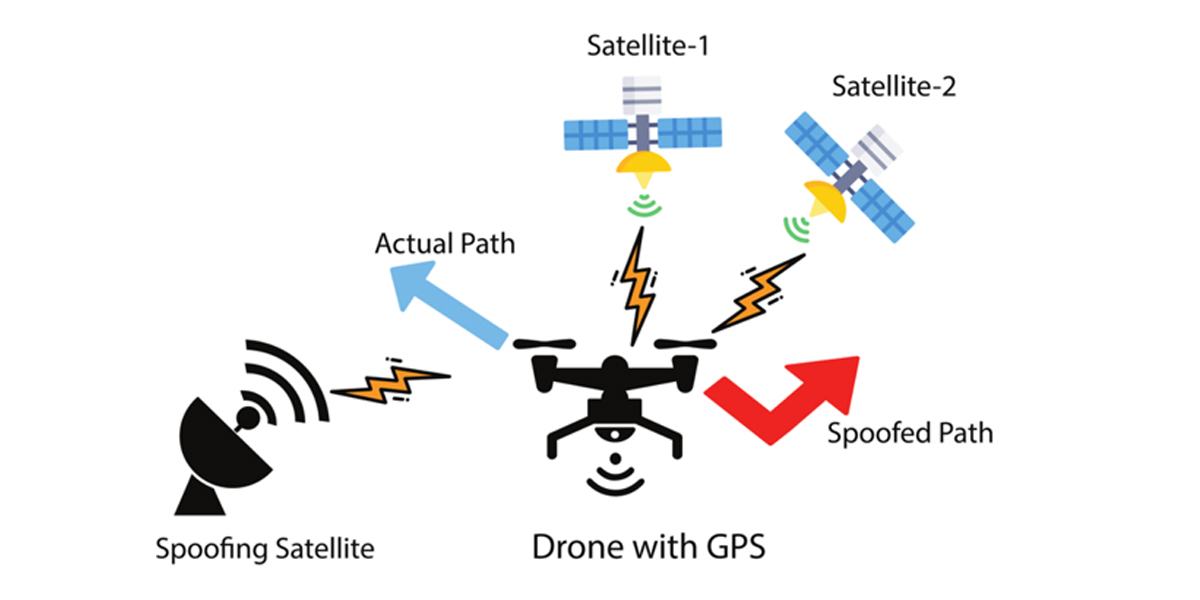From navigation to communications, and from financial transactions to power grid synchronisation, Global Positioning System (GPS) technology underpins countless aspects of daily life. ensuring precise and efficient timing and location-finding. However, says Markus Lutz, this dependency has also introduced vulnerabilities—most notably, GPS spoofing

GPS spoofing is a cyberattack technique that broadcasts counterfeit GPS signals to deceive receivers, leading them to display incorrect location or time data. Unlike jamming, which merely blocks GPS signals, spoofing actively misleads systems, creating the illusion of authenticity. This has dire implications across various sectors:
• Aviation: Spoofed signals can mislead pilots and air traffic controllers, causing flight diversions and potential safety hazards.
• Military Operations: Guided missiles and other defense systems relying on GPS can be rendered ineffective by spoofed coordinates.
• Maritime Navigation: Ships can be tricked into navigating off-course, posing risks to cargo and crew safety.
• Financial and Communication Networks: Many critical infrastructures rely on GPS for time synchronization; spoofing could disrupt transactions and data transfers.
How GPS works and why it’s vulnerable
GPS receivers determine location by calculating the time it takes for signals to travel from multiple satellites. Given that radio waves move at a known speed, precise timing is critical for accurate positioning. Spoofing manipulates this process by sending stronger, counterfeit signals that overpower authentic ones, fooling receivers into miscalculating location or time.

Strategies for preventing GPS spoofing
Addressing GPS spoofing requires a combination of technological innovations, regulatory measures, and increased awareness. Key approaches include:
1. Signal Monitoring and Anomaly Detection
Genuine GPS signals are relatively weak when they reach Earth. Systems that detect unusually strong signals or sudden shifts in timing can alert users to potential spoofing attempts in real time.
2. Multi-System Cross-Verification
Using multiple Global Navigation Satellite Systems (GNSS) like GLONASS, BeiDou, and Galileo alongside GPS enables cross-checking of positioning data. If discrepancies arise, they can indicate a spoofing attack.
3. Cryptographic Authentication
Modern GPS satellites incorporate encryption to authenticate signals, making it significantly harder for attackers to generate counterfeit transmissions. As these enhanced systems become widespread, spoofing defenses will improve.
4. Crowd-Sourced Data Analysis
By aggregating positioning data from multiple GPS receivers, inconsistencies can be detected more effectively. This approach helps isolate false signals and validate genuine ones.

Hardening GPS signals and systems
Beyond detection, strengthening GPS-dependent systems is essential. Several advanced techniques are emerging:
MEMS-Based Oscillators for Timing Stability: Microelectromechanical systems (MEMS) oscillators are revolutionizing precision timing. These rugged, highly stable oscillators allow GPS-dependent systems to maintain accurate time even if GPS signals are compromised. Additionally, they can detect frequency anomalies associated with spoofing attempts.
Multi-Antenna Systems and Beamforming: Deploying multiple antennas allows for beamforming—comparing the angles of incoming signals to distinguish authentic ones from spoofed signals. This technique, already used in 5G networks, is being adapted for GPS applications.
GPS Firewalls: These specialized devices sit between the receiver and the external antenna, filtering out signals that do not match expected parameters. GPS firewalls are already used in maritime and military applications, with ongoing efforts to miniaturize them for broader adoption.
Inertial Navigation Systems (INS) Integration: INS can serve as a backup to GPS, providing independent navigation data for short periods. By cross-referencing INS and GPS readings, spoofing attempts can be detected more reliably.
Ensuring secure and reliable GPS for the future
Reliable GPS data is essential for public safety, national security, and everyday infrastructure. From coordinating emergency responses to ensuring the accuracy of financial transactions, securing GPS against spoofing is a critical priority. By implementing robust anti-spoofing measures and advancing GPS technology, we can protect the integrity of our positioning and timing systems, ensuring their resilience in an increasingly digital world.
Markus Lutz co-founded SiTime in Santa Clara, USA, in 2005 and which, within two years, released the world’s first MEMS oscillator into mass production. Today, the business has sales and support in seven countries worldwide, and is the world’s leading supplier of oscillators with more than three billion devices supplied for 300+ applications. This article is based on GPS Spoofing And The Importance Of Assured Communications In A Crisis written by Markus Lutz and initially published by Forbes.
Subscribe to our newsletter
Stay updated on the latest technology, innovation product arrivals and exciting offers to your inbox.
Newsletter

